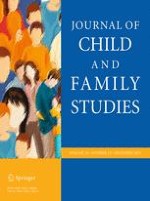24-03-2015 | Original Paper
Conflict and Dominance Between Siblings as Predictors of Children’s Peer Victimization
Gepubliceerd in: Journal of Child and Family Studies | Uitgave 12/2015
Log in om toegang te krijgenAbstract
This study examined relations among sibling conflict, sibling dominance, and peer victimization. Participants were 65 elementary school students and their parents, with additional data provided by teachers and classmates. Structured interviews were used to gather information about children’s relationship with their nearest-age sibling. Findings differed substantially based on parent versus child sibling conflict ratings. Sibling dominance negatively predicted parent-rated sibling conflict. Sibling dominance moderated the relation between child-rated sibling conflict and self-rated peer victimization such that sibling conflict positively predicted peer victimization for dominant siblings, but negatively predicted victimization for children who were submissive to their sibling. The linear and curvilinear sibling dominance terms moderated relations between sibling conflict and peer victimization as rated by teachers and peers, but the nature of interactions varied by parent versus child report of sibling conflict. Children regarded by parents as engaging in frequent sibling conflict were at greater risk of teacher- and peer-reported victimization, but not if the child was dominant over their sibling. The curvilinear dominance term also moderated the relation between child-rated sibling conflict and peer-reported victimization. Child-rated conflict negatively predicted victimization for children in balanced sibling relationships but positively predicted victimization for children in sibling dyads characterized by dominance disparity. Findings are complex, but suggest healthy sibling relationships characterized by balanced levels of social dominance can protect against peer victimization.
